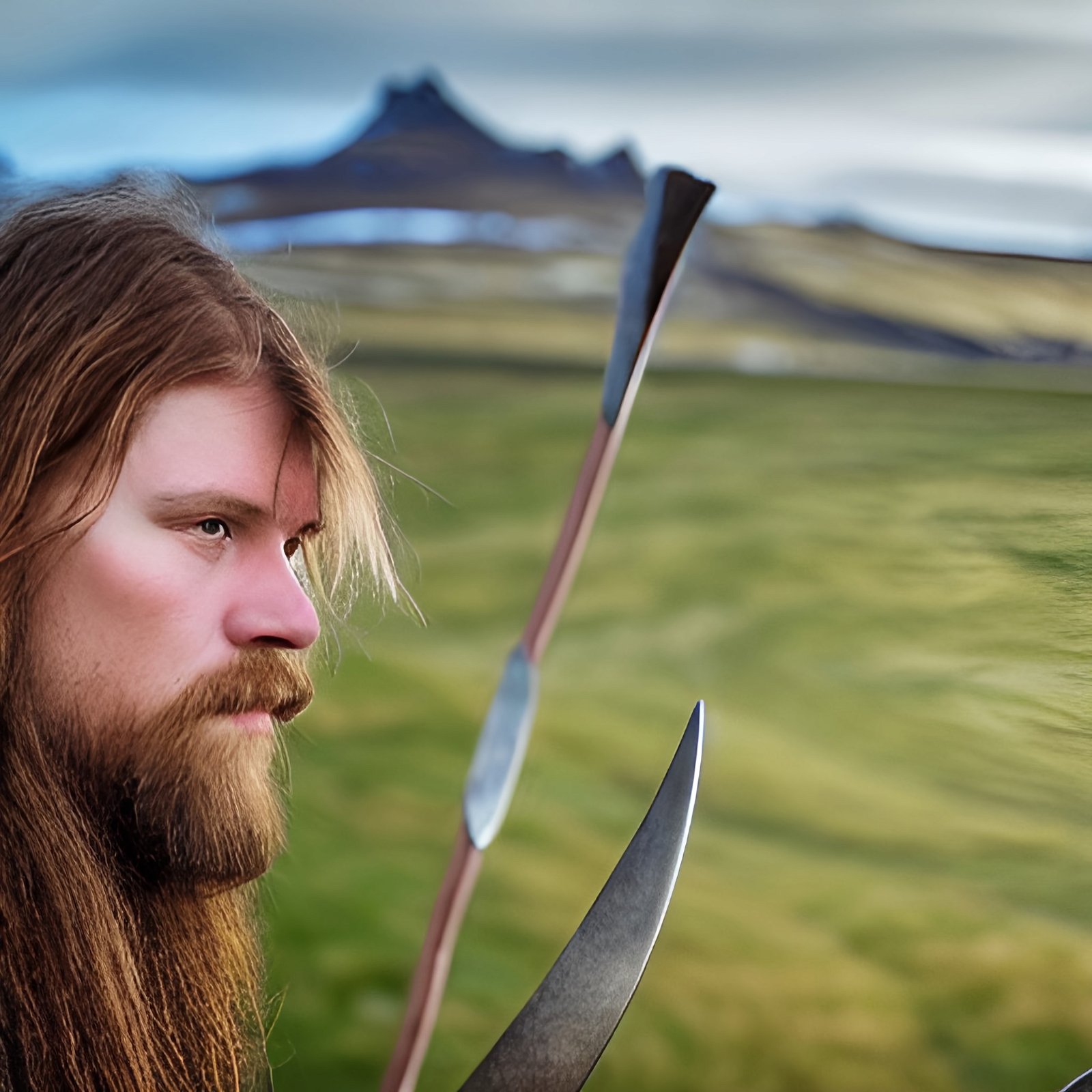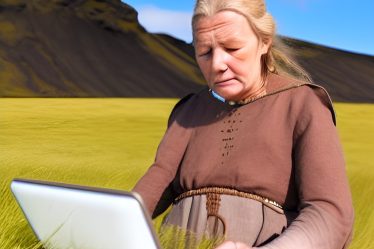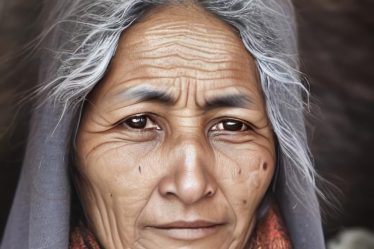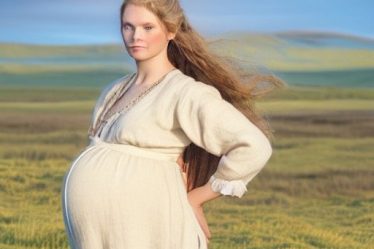
The following questions will be answered in this article, and below them you will find more topics I have written separate articles on.
- What is Bjartey?
- What do you mean by “fictional vikings”?
- What do you mean by “vikings”?
- What are these characters based on?
- So, are there dragons?
- What about orcs, hobbits and fairies?
- Not even elves?
- So it’s not actually fantasy?
- What does Bjartey mean?
- How is Bjartey pronounced?
- Why the name Bjartey?
- Who is the person behind the Bjartey project?
- Can I use your characters in my role-playing campaign?
- What are these characters for?
- How do you go about making historically accurate diverse Old Norse characters?
- Why aren’t there more religious people?
- What does NW, NE, SW and SE mean?
- How to find a suitable Old Norse name?
- Where to find inspiration for fantasy viking characters?
What is Bjartey?
Bjartey is the fictional place where my fictional vikings live or trade or just came by some day and left again to go somewhere else. It has only recently been settled. It’s not medieval Iceland, but it does have similarities, vikings for example.
What do you mean by “fictional vikings”?
Bjartey is an art project at the intersection of literature, games and visual art. May contain traces of cultural anthropology, but it’s strictly an art project, not science.
The goal is to create the characters you could meet when travelling to Bjartey or dealing with people from there, both through words and pictures. Because they are my invention, they are fictional. You can also call them imaginary or fantasy.
What do you mean by “vikings”?
The term “viking” is misleading because it only refers to a small part of the population we today call vikings. Vikings in the narrower sense were seafarers who, in the period from the 8th to the 11th century, set out from Scandinavia, the British Islands and Normandy to plunder and to trade. This activity was referred to as “at leggjazk í víking”, “to go on a viking raid”.
Calling all people of this time and cultural area “vikings” is a bit like calling all 20th century people in the northern hemisphere “astronauts”.
But we got used to the term viking, and “pre-christian germanic polytheist culture in the Scandinavian area” is not only bulky, but imprecise as well. So: viking.
What are these characters based on?
I have three main sources of inspiration.
1.Literature
Most of my inspiration comes from Old Norse literature, especially the 👉 Legendary Sagas (fornaldarsögur) which 👉 I helped translate to German, and the 👉 Sagas of the Icelanders. These are literary sources, not historical ones, and like their authors I have taken the liberty to model my characters the way I want them to be. Recently I have taken to index the names in the 👉 Book of Settlement (Landnámabók) to get a more precise look at Old Norse names.
2. Experience
… perhaps not least because I come from Iceland and my mind is therefore more enclosed by ocean than most other people’s.
(Halldór Laxness, Skáldatími, 1963 — my own translation)
I have lived on a farm in Iceland and draw from that experience when I imagine the everyday life of my vikings. I know how to spin wool, milk a cow, ride a horse, and bake bread. For other activities, like archery, brewing, forestry or sailing an open ship over the ocean, I have to rely on other people’s experiences, and where information becomes scarce (and scary), like about being abducted and traded as a servant, or fighting hand-to-hand with axes, I rely on my imagination like so many authors before me.
3. Science
I do enjoy writings on archaelogical findings, linguistic studies, and debates about historical events so much that I try to create the environment of my fictional vikings quite close to the historical reality of the Viking Age (saving me the tedious world-building procedure!) So they wear woven and felted clothes, not knitwear, they use axes, not halberds, and they transport their goods by ship or on horse-back, not in carriages. I give them authentic names that can be found in contemporary sources. But I allow them to have thoughts, wishes, and feelings that were only hinted at in the sources, if found at all. My warrior can have PTSD, my poet can be depressed, my princess can be a fighter, my farmer’s daughter can want to read and write, and my fisherman’s daughter can dream of her own merchant’s fleet.
Also, when dealing with science, remember that absence of evidence is not evidence of absence.
Obviously you can’t get all the details right, and I don’t have to. Sometimes I don’t want to, because “What if…” is more fun than “No, they didn’t.”
So, are there dragons?
No. I love dragons, but at the moment, there are no dragons in Bjartey. I haven’t decided on magic yet.
What about orcs, hobbits and fairies?
None.
Not even elves?
Definitely not. Former 👉 Horde player here.
So it’s not actually fantasy?
I care more about my characters’ lives than about terminology. So you decide. If your concept of fantasy characters includes racist stereotypes, if you equate vikings with heroes, or if you promote gender clichés, then my brand of fantasy isn’t your brand of fantasy.
What does Bjartey mean?
Bjartey means “bright island”. It is also a female given name gaining popularity in Iceland.
How is Bjartey pronounced?
👉 Here you can find out how to pronounce Bjartey.
Why the name Bjartey?
I chose the name as a kind of antithesis to English literature’s 👉 Mirkwood concept. Not that everything is shiny-happy in Bjartey, people have the misfortune to get sick and crippled by accidents and lost at sea just like everywhere else, and life there is hard and demanding, also just like everywhere else. Bjartey isn’t a utopian paradise of sunshine and rainbows, but it isn’t as inherently dystopian as Tolkien’s Mirkwood.
Naming a country your culture didn’t know about before in a euphimistic way is not unheard of in Norse literature: According to the Saga of Erik the Red (Eiríks saga rauða), Erik named Greenland in order to make it sound attractive to potential settlers. As I want to grow my fictional population on my fictional island, I do the same!
Who is the person behind the Bjartey project?
My name is Maike Hanneck and I am a game designer, artist and translator of Old Norse literature. My developer blog (in German) can be found at 👉 www.lanoki.de
Can I use your characters in my role-playing campaign?
Yes, you’re welcome to! Tell me all about it in the comments! Maybe there’s a character you need that I have already made?


